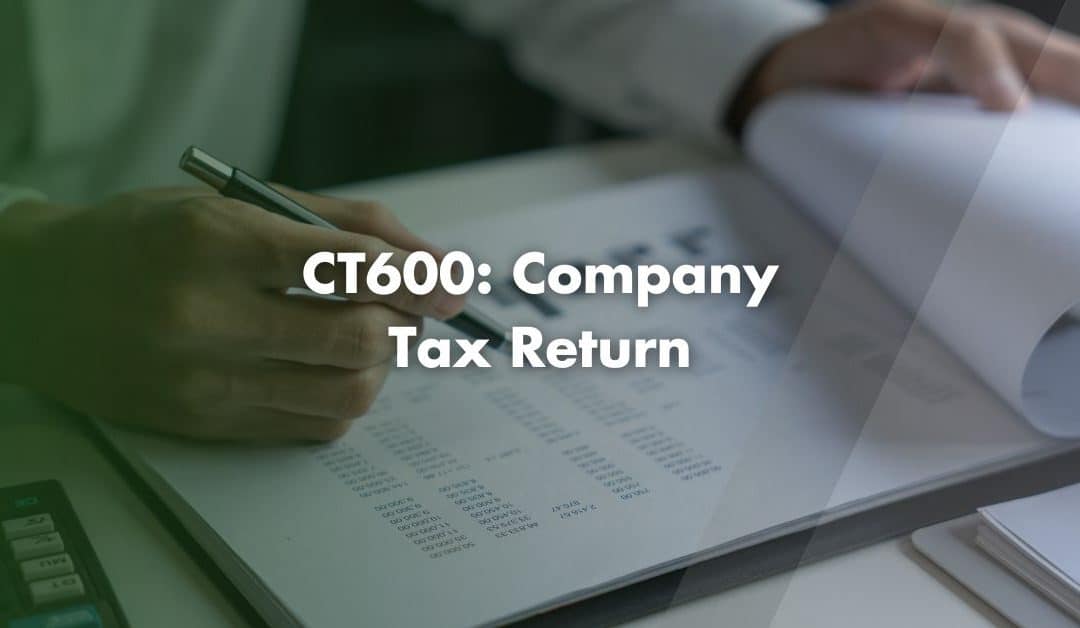Running a limited company comes with responsibilities and one of them is filing your Company Tax Return. You do this using the CT600. Knowing what this form is and how to submit it correctly can save you time and money.
What is the CT600?
The CT600 is the official Company Tax Return form. It reports your company’s income, expenses and Corporation Tax owed to HMRC. You use it to declare profits, claim tax reliefs and confirm your Corporation Tax calculation. The form also includes a signed declaration confirming that the information is complete and accurate.
Even if your company has made no profit, you still need to complete a CT600 if HMRC has sent you a notice to deliver one. This ensures HMRC has an up-to-date record of your company’s financial position.
Who Must File a CT600?
You must file a CT600 if HMRC sends you a notice to deliver a return. This applies even if:
- Your company made no profit
- You have no Corporation Tax to pay
- HMRC sends you a notice asking for a return
Other organisations, including associations and charities with trading income, may also need to file a CT600. Dormant companies normally do not need to file unless HMRC issues a notice. You must notify HMRC if your company becomes dormant.
Sole Traders and Partnerships do not file a CT600, as they report income through Self Assessment.
Understanding the Accounting Period
Your accounting period is the period your CT600 covers. It usually matches your financial year but may differ in the first year of trading or if you change your year-end date.
Remember:
- Your Corporation Tax accounting period cannot exceed 12 months
- You must file two returns if your first accounts cover more than 12 months
- You can change your accounting reference date with Companies House but cannot extend it beyond 18 months more than once every five years
Filing Deadlines
You must file your CT600 within 12 months of your accounting period end date.
For example: If your period ends on 31st December 2024, your filing deadline is 31st December 2025.
Paying Corporation Tax is different. You must pay it within 9 months and 1 day after your accounting period ends. However, if your company is “large” or “very large”, you will pay in quarterly instalments. Missing either of your deadlines can result in interest charges and penalties.
How to File the CT600
There are three ways to file your CT600:
1. The Joint Filing Service
You can file directly through the Joint Filing Service. You will need:
- Your company’s Unique Taxpayer Reference (UTR)
- Government Gateway login details
- Accounts in iXBRL format
IMPORTANT: The Joint Filing Service will close after 31st March 2026. You should consider commercial software as soon as possible. [Read more]
2. Commercial Software
Commercial accounting software can file your CT600 automatically. This option reduces errors and keeps your accounts organised, while ensuring you claim all available reliefs such as Capital Allowances. Software also includes support for R&D claims, which must now be accompanied by an Additional Information Form.
3. Paper Filing
Paper filing is only allowable if you have a valid reason. You must also submit form WT1 to explain why you are filing by post.
What to Include in Your CT600
Your completed CT600 will include:
- Company name, registration number and UTR
- Income, expenses and taxable profit
- Corporation Tax calculation and details of any Quarterly Instalment Payments, if applicable
- Claims for reliefs such as Capital Allowances or R&D credits
- A declaration signed by a director or authorised person
Penalties for Late Filing
HMRC applies penalties for late CT600 submissions:
- £100 fine for 1 day late
- £100 additional fine for 3 months late
- HMRC will estimate your tax and add a 10% surcharge for 6 months late
- Another 10% surcharge for 12 months late
- If your company is late 3 times in a row, the £100 penalties increase to £500 each
Inaccurate returns may also lead to penalties. Filing early gives you time to correct mistakes and avoid fines.
Contact Us
We are not just accountants; we are Chartered Accountants with one of the most reputable and premium accounting bodies. We are registered and regulated by ACCA; so you can rest assured that you are in good hands. Knowing this, don’t hesitate to get in touch with us if you require assistance: Pi Accountancy | Contact Us
This article is for general informational purposes only and does not constitute legal or financial advice. While we aim to keep our content up to date and accurate, UK tax laws and regulations are subject to change. Please speak to an accountant or tax professional for advice tailored to your individual circumstances. Pi Accountancy accepts no responsibility for any issues arising from reliance on the information provided.

